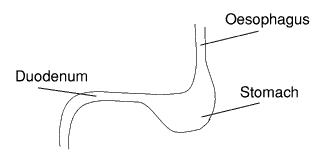
Peptic ulcer refers to an area of the stomach or duodenal lining that becomes eroded by the stomach acid. These are known as stomach and duodenal ulcers, collectively known as peptic ulcers.
Symptoms
You may notice no symptoms although you have an ulcer, but frequently they are associated with indigestion or pain in the upper abdomen or even lower chest. This pain may be worse before or after eating and frequently wakes you in the early hours of the morning. The pain may go to the back or sometimes be perceived elsewhere.
If an ulcer bleeds you may vomit blood or partially digested blood (which looks like coffee grounds) or pass black stools (melaena), which contain changed blood, when you go to the toilet. If any of these happen call the doctor immediately (even out of hours).
Causes
Many factors make you more likely to have an ulcer.
- It often seems to run in families
- Smoking increases the risk
- Heavy drinking
- Certain drugs, such as aspirin and other anti-inflammatory drugs
- We now know that a large percentage of people who have ulcers have a germ (Helicobacter pylori) in their stomach which they probably picked up many years previously, that makes the ulcer more likely to occur and more difficult to heal.
Diagnosis
Your doctor may treat you on the assumption of the diagnosis, but may well arrange either a barium meal X-ray or a visual inspection using a fibre-optic tube passed down the throat (upper gastrointestinal endoscopy). The endoscopy is preferred by the experts as they can see the lining of the stomach and duodenum and take samples (biopsies) that allow them to rule out more serious conditions and to look for the presence of Helicobacter pylori.
A simple blood test or a test which measures the chemicals in your breath may also be used to look for evidence of Helicobacter pylori.
Treatment and prevention
- If you smoke, stop
- If you drink heavily, stop or cut down
- Eat small meals regularly
- Avoid any foods that seem to bring on pain
- Try simple antacid mixtures or tablets to neutralize the acid. These will usually only ease the symptoms, although very high doses may eradicate an ulcer. High doses should not be used without due consultation with a doctor.
- Your doctor may prescribe a tablet that reduces the production of acid in the stomach. This is likely to cure an active ulcer.
- If you have Helicobacter pylori or your doctor has good grounds to think that you may have it, they may well prescribe a course of antibiotics (possibly two types) along with acid reducing tablets. This treatment is aimed at eradication of the bacteria, and as such is likely to cure the current ulcer and make it much less likely that further problems will occur.
